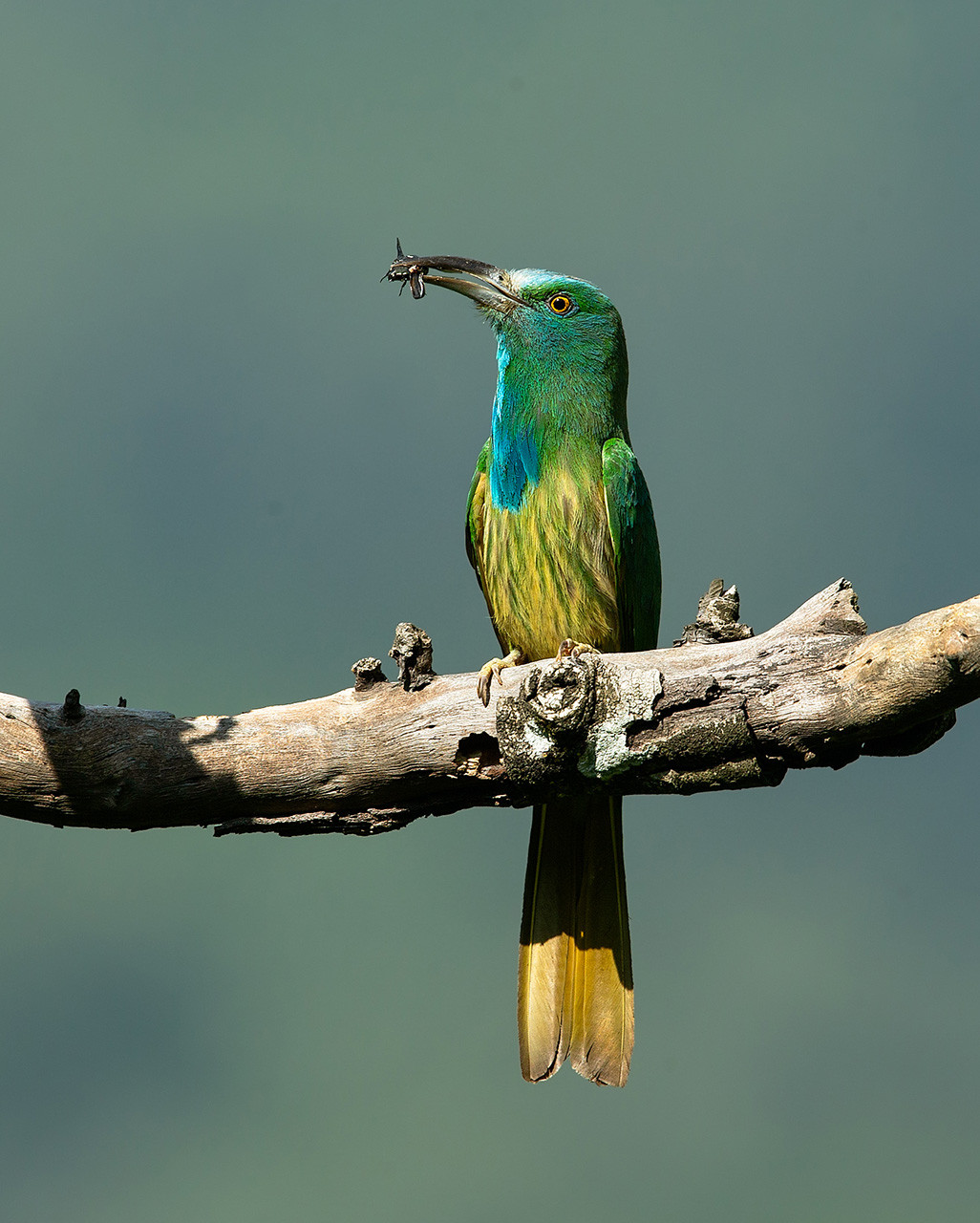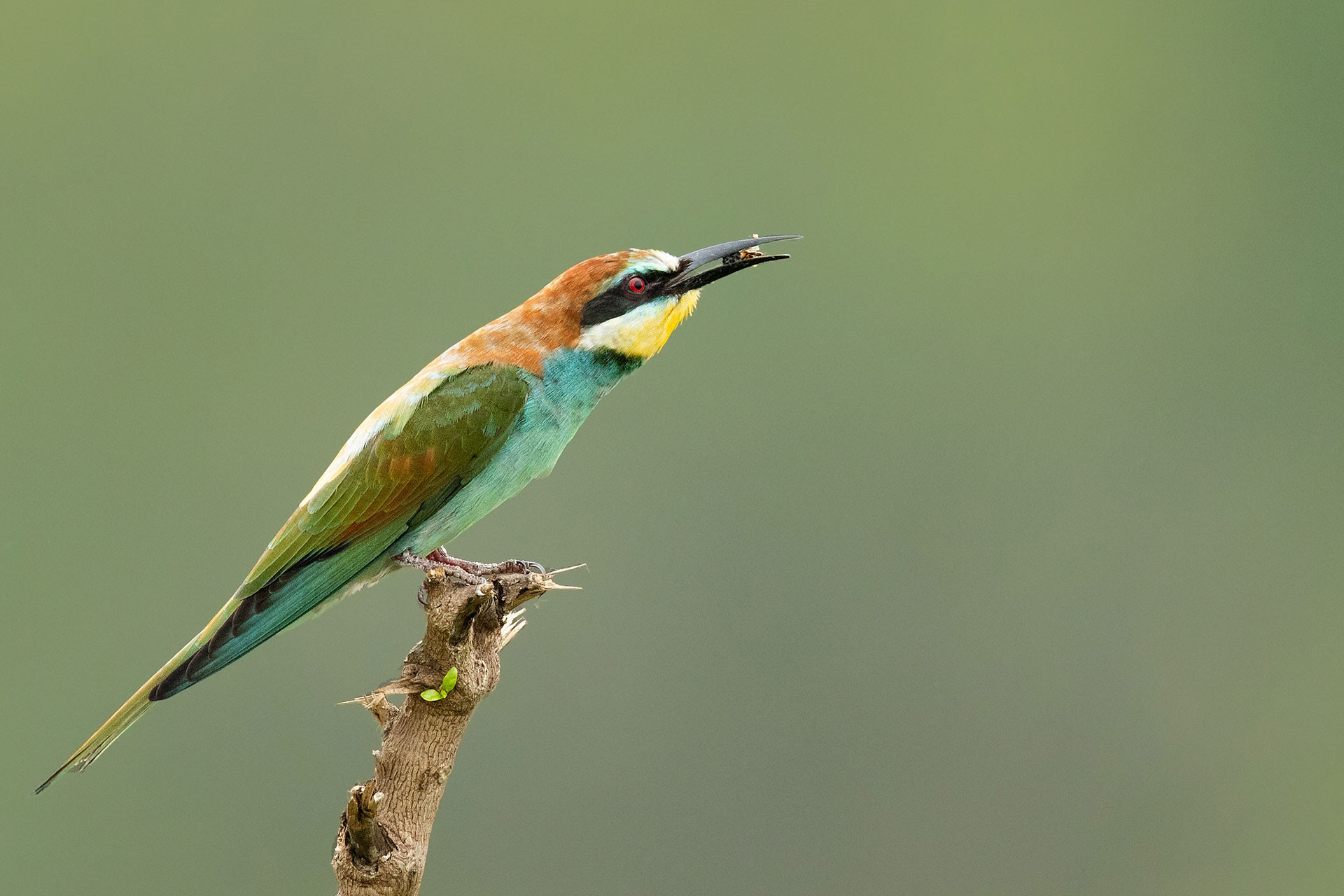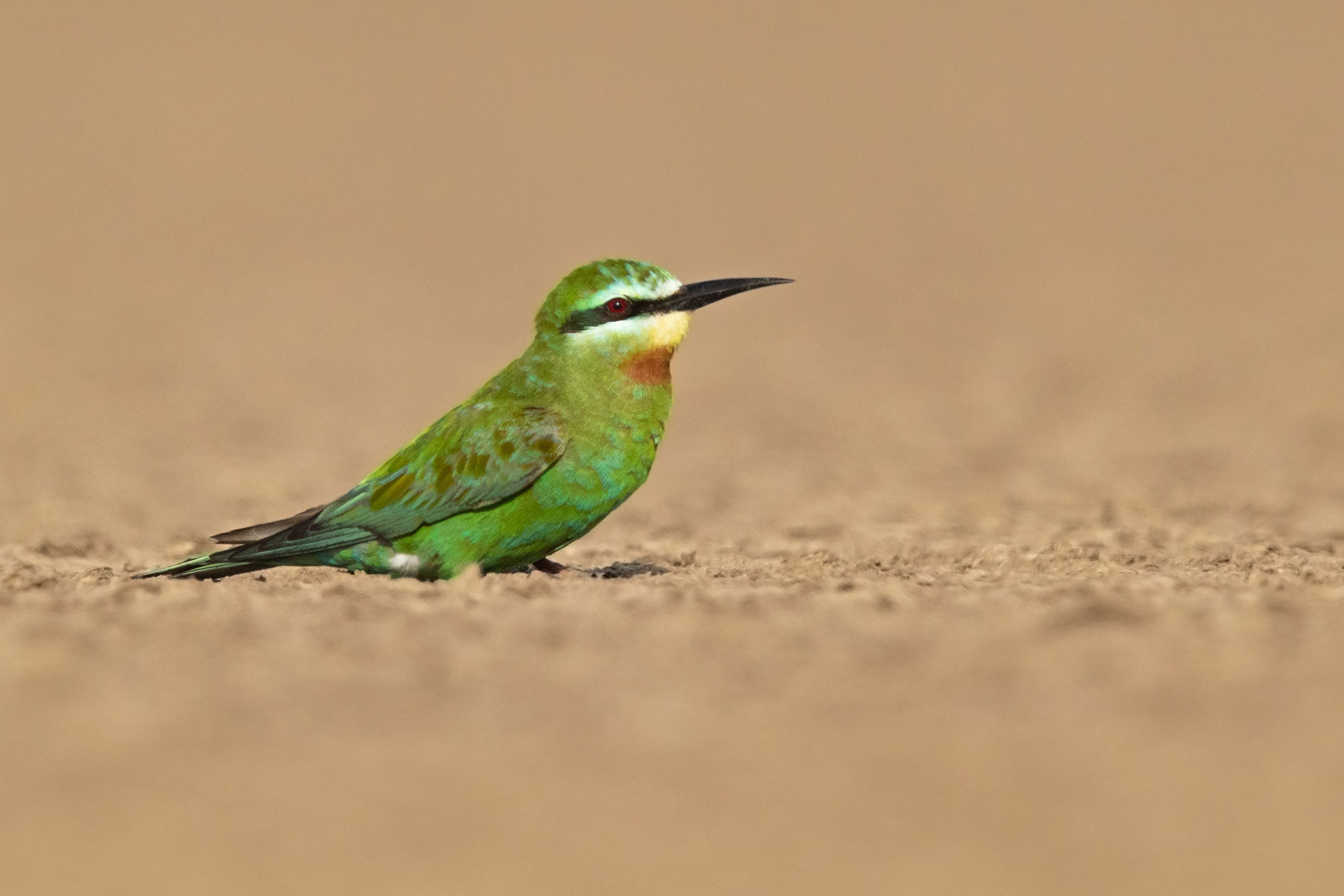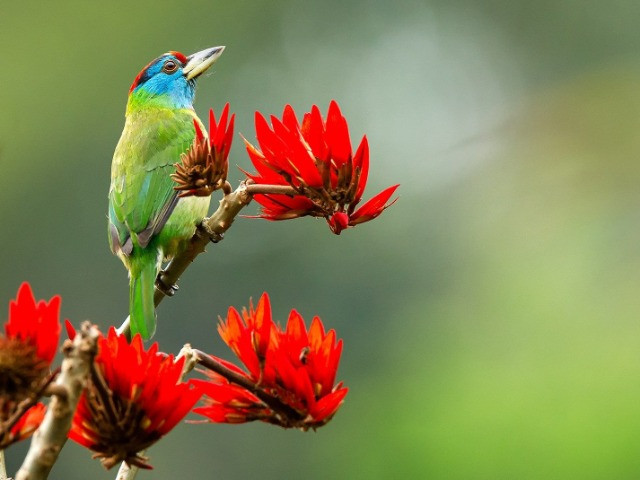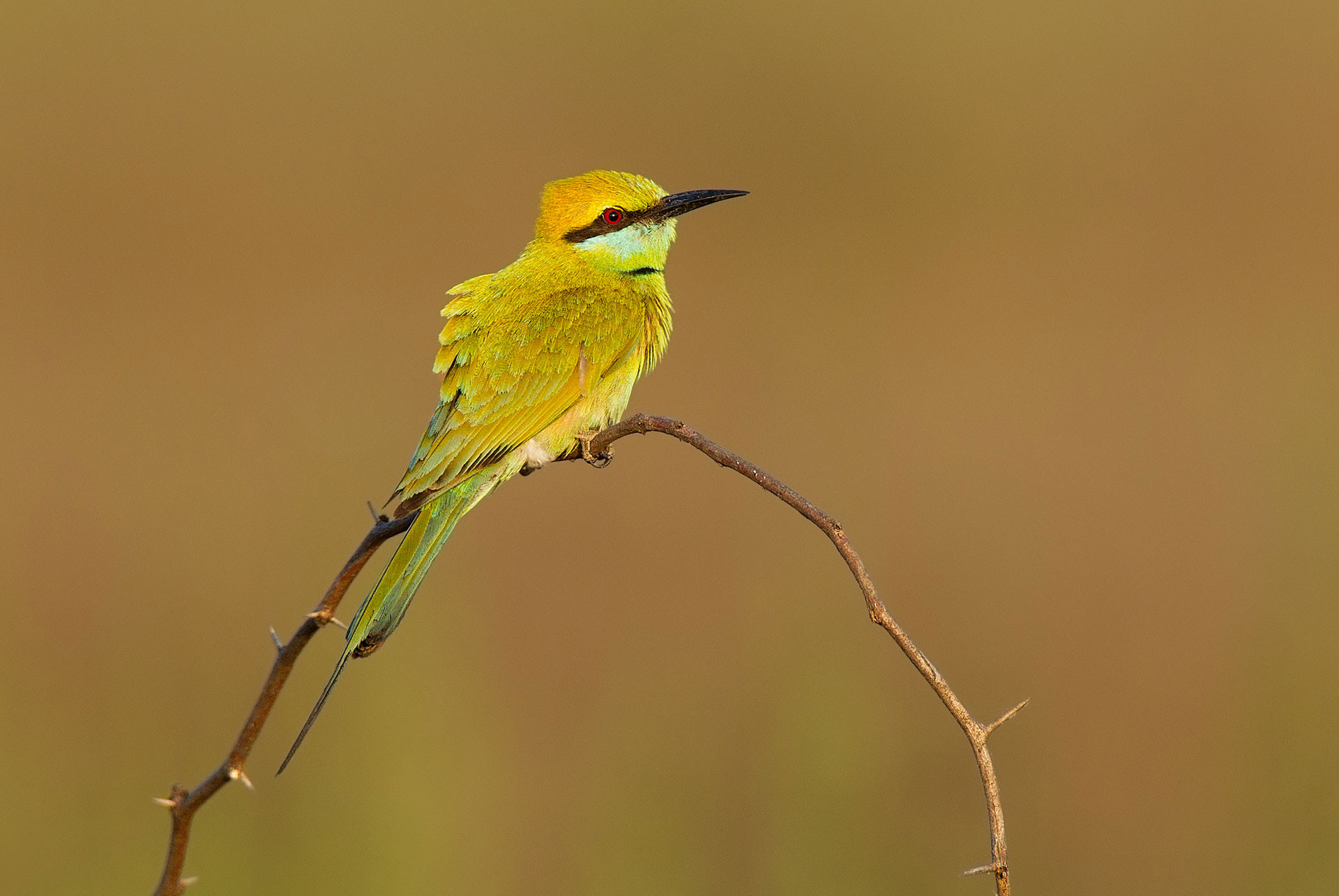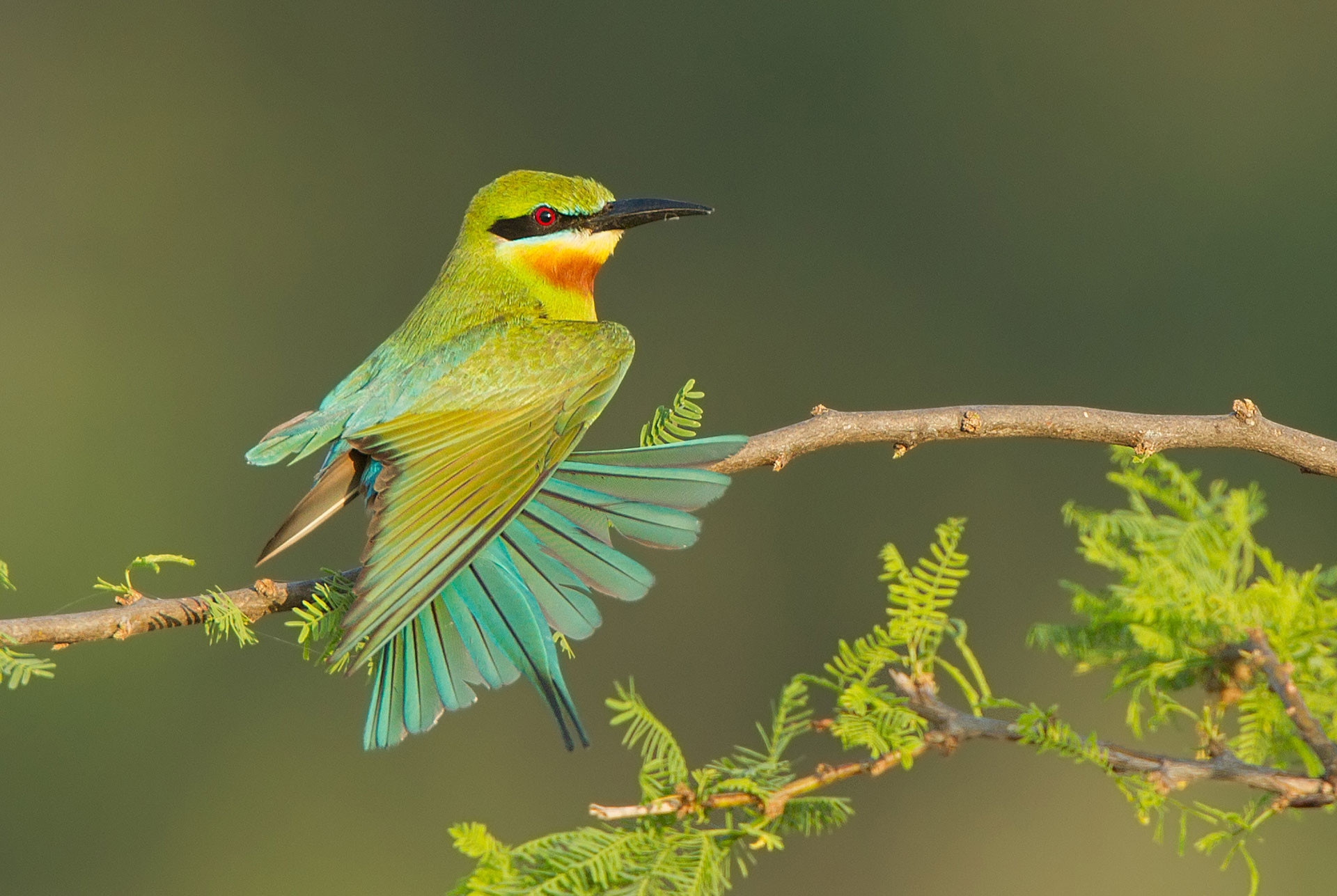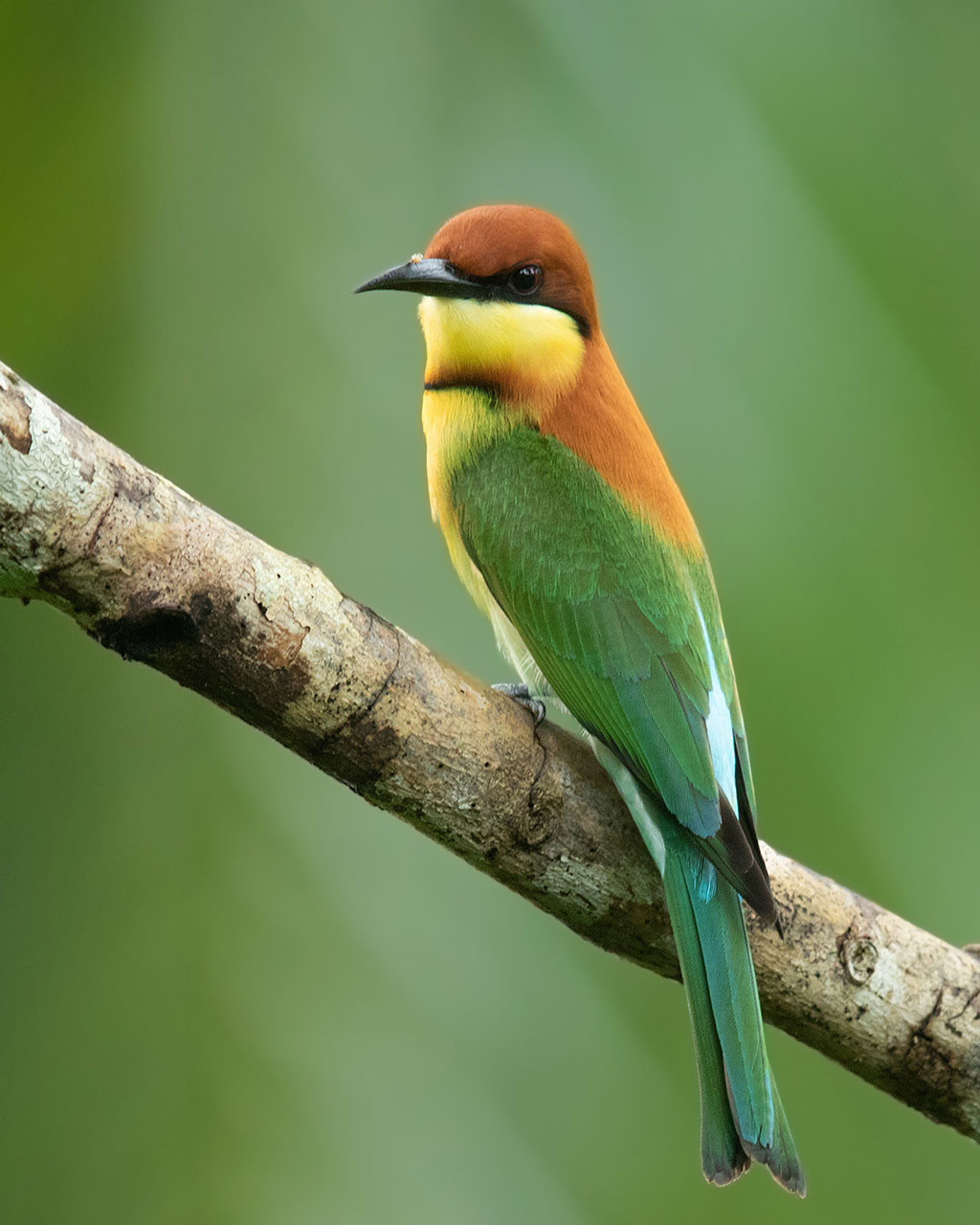Gregarious, colourful and known for their rapid response to flying insects, bee-eaters are birds that are hard to miss. Members of the Meropidae family, there are about 22 bee-eater species in this group, of which six are present in India. Their strong beaks aid them in grabbing insects, especially bees, mid-air. The prey then gets beaten against a perch to remove the exoskeleton, killing the insect in the process. Bee-eaters also rub their prey against a branch to get rid of sting and toxins before they feed on them. Quite the process!
Bee-eaters share some of their traits with other members of the order Coraciiformes, which includes kingfishers, rollers and hornbills. Their bright colours apart, the insect-loving birds nest in burrows in the soil. But one of their most intriguing characteristics is their social structure. While most bee-eater species are monogamous, several species live in large colonies, sometimes consisting of over 100 birds. Breeding pairs also help other members of the flock. In fact, the birds most likely recognise their family members and neighbours using voice recognition!
So here is a quick rundown of these brightly-coloured birds that can chomp down as many as 225 insects in a day! What can we say? There is never a dull moment when the bee-eaters are around.
Blue-bearded Bee-eater (Nyctyornis athertoni)
With populations spread across parts of China, Bangladesh, Bhutan, India, Thailand, Vietnam and other neighbouring countries, Blue-bearded Bee-eaters prefer forest areas, rural gardens and parks as habitats. These birds have an overall green plumage with a bluish colouration on their face and neck and yellow underparts. Blue-bearded Bee-eaters feed on insects, wasps and honeybees.
European Bee-eater (Merops apiaster)
With breeding populations distributed in northern India and parts of Europe and Africa, European Bee-eaters winter in tropical African countries. They occupy a range of habitats depending on their geographical location. European Bee-eaters prefer shrublands, grasslands, and temperate forests near rivers and streams. With the white patches on their forehead, yellow throat, and brown, green and blue wings, European Bee-eaters are hard to miss. Insects that belong to the Hymenoptera family form a large part of their diet, including the European Honey Bee.
Blue-cheeked Bee-eater (Merops persicus)
Distributed across parts of Africa, Egypt and the Middle East, the Blue-cheeked Bee-eater is also seen in northwest India. While the bee-eater species occupies forest regions, swamps and lakeshores during the non-breeding season, it is seen in desert and semi-desert habitats during the breeding season. True to their name, the birds have blue colouration on the cheek area along with a yellow chin and an orange throat patch. Winged insects form a large part of their diet.
You may also like to read
Green Bee-eater (Merops orientalis)
Also known as Asian Green Bee-eater, the bird is categorised into four subspecies which are found in Iran, Pakistan, Thailand, Vietnam and other nearby regions. The subspecies M. o. orientalis is widespread in India, found in most parts of the country except the northwest and northeast. Green Bee-eaters are found in habitats like forests, shrublands, deserts and wetlands. They are identified by their overall green plumage, rufous patches on their head and a distinct black line from the base of the bill to the eye region. The birds feed on wasps, ants, bees and other flying insects.
Blue-tailed Bee-eater (Merops philippinus)
With a presence across Asian countries like Thailand, Vietnam, Bangladesh and China, among others, Blue-tailed Bee-eaters are known to breed in various parts of the Indian subcontinent. Forests and wetlands are their main habitats. As the name suggests, Blue-tailed Bee-eaters have blue-coloured tail feathers, and they exhibit a greenish-brown colour overall. A distinct narrow blue line is observed on the face. Found near water bodies, Blue-tailed Bee-eaters mainly feed on flying insects.
Chestnut-headed Bee-eater (Merops leschenaulti)
Resident breeders of the Indian subcontinent, Chestnut-headed Bee-eaters are further divided into three subspecies. They are observed in the northern and southern parts of the country and neighbouring countries like Bangladesh, Sri Lanka, Indonesia, China and more. A riot of colours, Chestnut-headed Bee-eaters exhibit yellow, blue, green and brown colouration with a prominent chestnut head. They reside in forest areas, gardens, fields, wetlands and shrublands. They mainly feed on grasshoppers, bees, crickets and butterflies, hunting their prey from an open perch.

